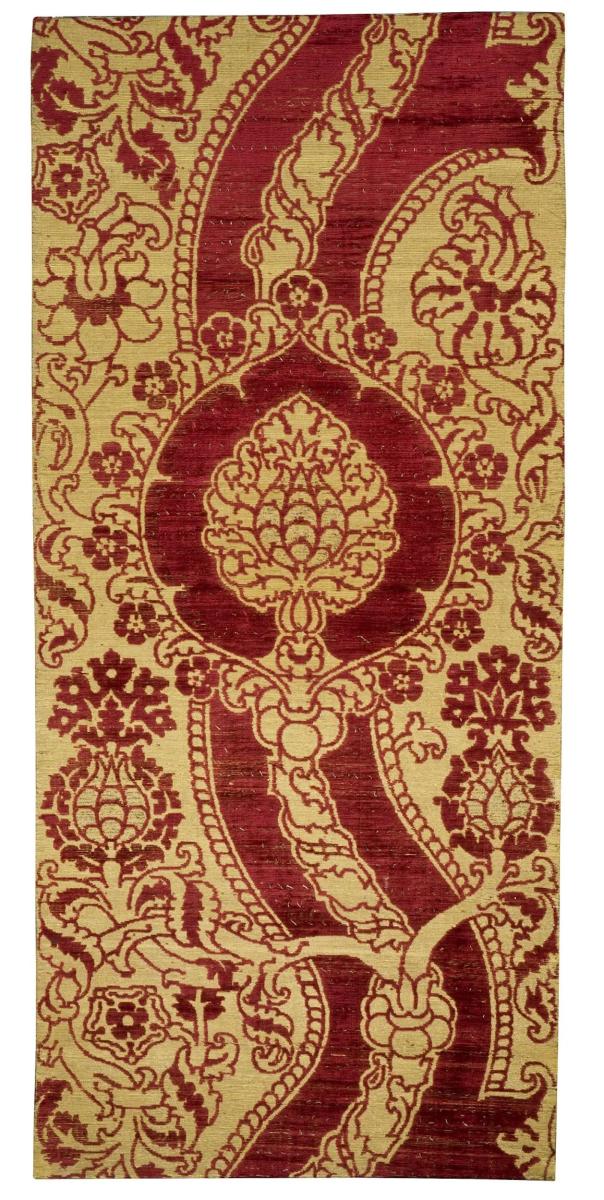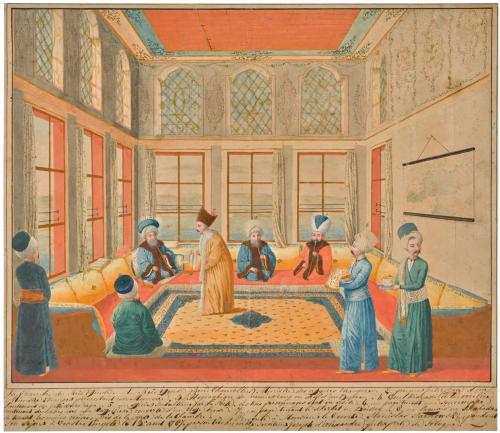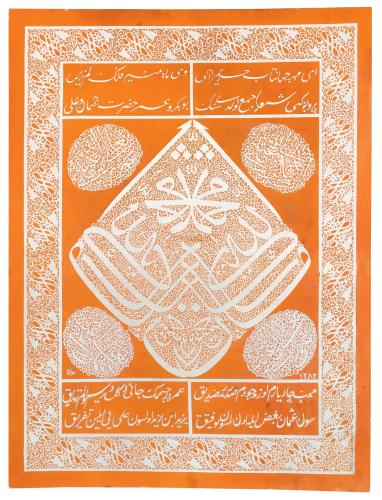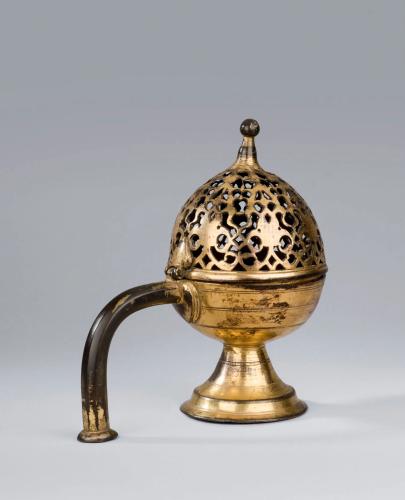

Price on application
This object is eligible for a Certificate of BADA Provenance
The BADA Standard
- Since 1918, BADA has been the leading association for the antiques and fine art trade
- Members are elected for their knowledge, integrity and quality of stock
- Our clients are protected by BADA’s code of conduct
- Our dealers’ membership is reviewed and renewed annually
- Bada.org is a non-profit site: clients deal directly with members and they pay no hidden fees
An Italian Velvet used for a Ceremonial Ottoman Kaftan.
Italy, probably Florentine.
Late Fifteenth or Sixteenth Century.
128 x 55 cm.
The ‘a griccia’ design of the present velvet is close to the one we find in the long-sleeved ceremonial kaftan, associated with the Ottoman Sultan Mehmed IV (r. 1648-87). Italian velvets were highly desirable at the Ottoman court for their three-dimensionality and status as prestigious imports. In the textile collection of the Topkapı Palace Museum the velvet kaftans made of Ottoman kadife and çatma are a minority, as most surviving pieces are European. The initial Ottoman preference for Venetian velvets was probably replaced by Florentine velvets, especially after relations with Venice deteriorated. The association of these velvets with the European upper classes and their use in the Istanbul court show how the Ottomans sought to appropriate European cultural symbols from an early period. The pomegranate motif we see in this fragment repeatedly appears in kaftans worn at court and was equally celebrated by both Italians and Ottomans, despite the different meaning it carried in the two cultural contexts. The luxuriousness of the fabric is complimented by the bouclé effect of metallic thread loops in the red ‘pelo’.
For the ceremonial kaftan associated with Mehmed IV please see, Tezcan, Delibaş & Rogers 1986, cat. 49. For similar or identical velvets see, Davanzo Poli 1998, cats. 9 & 10, 31-50; Degl’Innocenti & Lekhovich 2009, cats. 21, 24, 28, 32 & 56; Carboni 2007, cat. 61; Monnas 2012, cats. 24-26. For Italian fabrics at the Topkapı Palace see, Sibel Alpaslan Arça’s article ‘Osmanlı Sarayında İtalyan İpeklileri’ in Osmanlı Döneminde Venedik ve İstanbul, 2009, pp. 210-225.
The BADA Standard
- Since 1918, BADA has been the leading association for the antiques and fine art trade
- Members are elected for their knowledge, integrity and quality of stock
- Our clients are protected by BADA’s code of conduct
- Our dealers’ membership is reviewed and renewed annually
- Bada.org is a non-profit site: clients deal directly with members and they pay no hidden fees




